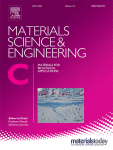Development of GelMA/PCL and dECM/PCL resins for 3D printing of acellular in vitro tissue scaffolds by stereolithography

To obtain a GelMA-based resin that can be printed into high-resolution tissue scaffolds, we formulated resins of fish and porcine-derived GelMA in formamide using GelMA alone or mixed with star-shaped poly(ε-caprolactone) methacrylate (PCL-MA). We identified GelMA resins and GelMA/PCL-MA hybrid resins with a ratio of 70/30 wt-% to yield a suitable viscosity for SLA at 32 °C and demonstrated the resolution of the new resins in SLA by 3D printing acellular human small intestine-mimicking tissue scaffolds. The presence of PCL-MA in the hybrid resins improved the 3D printing fidelity compared to the neat GelMA resins, while GelMA provided the hybrid materials with enhanced swelling and proliferation of seeded cells. We further demonstrated the transferability of our resin formulation to native organ-derived materials by successfully replacing GelMA in the hybrid resin with solubilized, methacryloyl-functionalized decellularized liver ECM (dECM-MA) and by 3D printing multi-layer dECM/PCL-MA hydrogels.
"Development of GelMA/PCL and dECM/PCL resins for 3D printing of acellular in vitro tissue scaffolds by stereolithography" was published in Mater Sci Eng C Mater Biol Appl. 2020 Jul;112:110958. Authors are L. Elomaa, E. Keshi, I.M. Sauer, and M. Weinhart.

